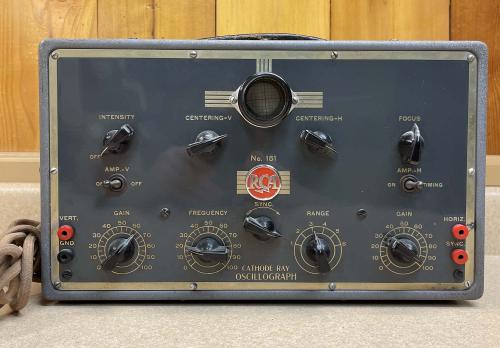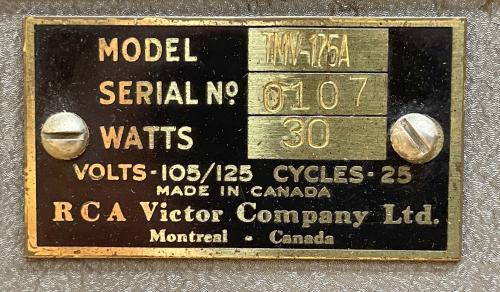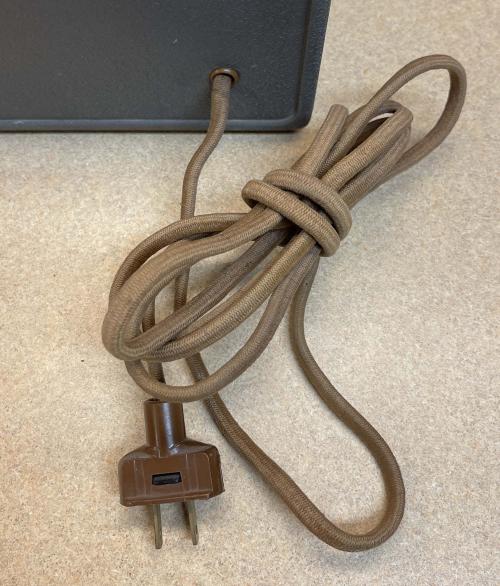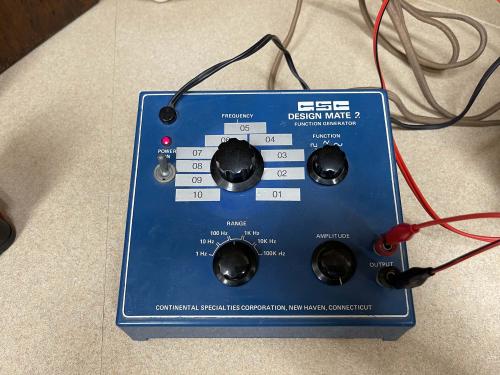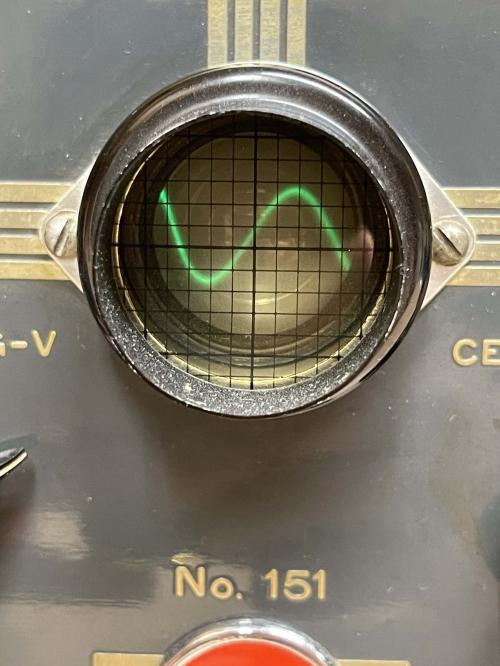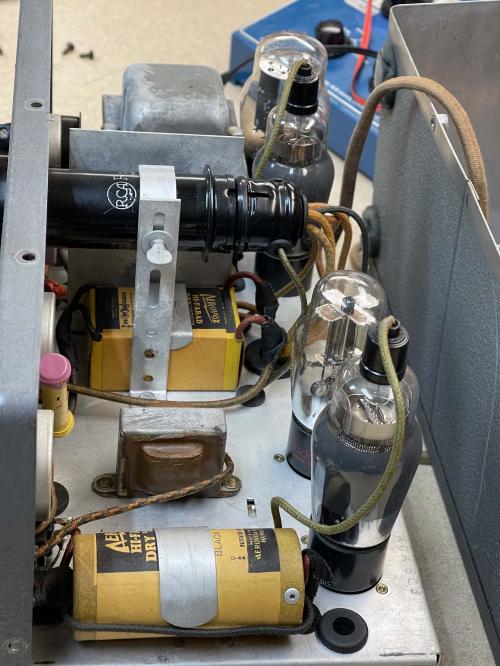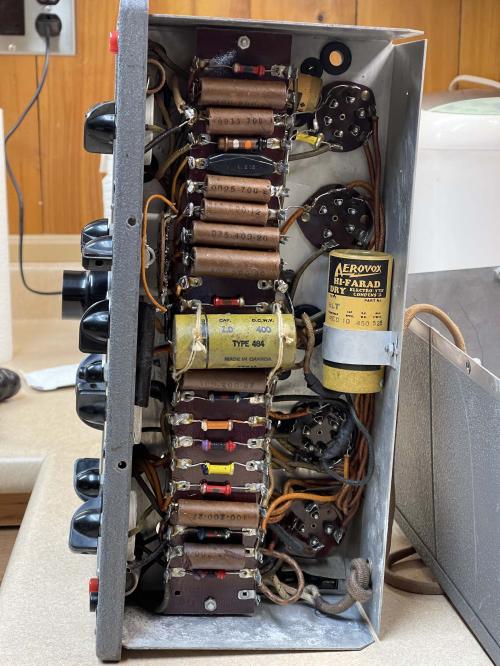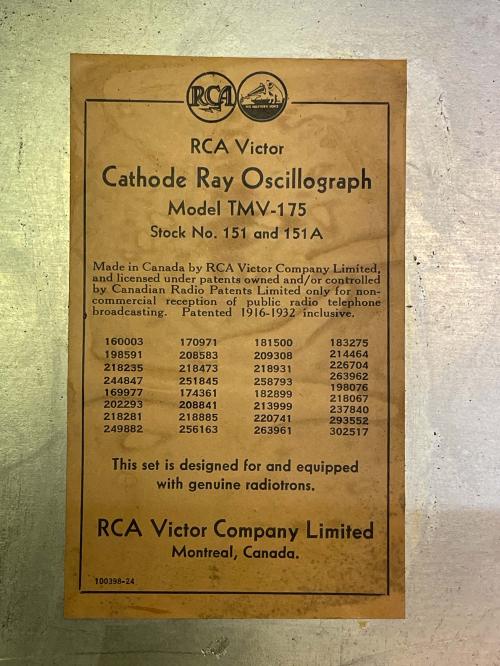- 2024
- Jul
- 7
The RCA 151 Oscilloscope
This is probably the second oldest piece of equipment that I have in my collection, but this one is known working.
The RCA 151 Oscilloscope (or, oscillograph as it was known at the time) was one of RCA’s early test equipment products, and was supposedly one of the first scopes that was considered “affordable” enough for a small radio shop or well-off hobbyist to purchase. It’s not calibrated in any way, shape, or form, and doesn’t have the ability to lock on a trace - it’s just a purely visual indicator to see waveforms as they travel through a device. It has a top end of about 15Khz, and utilized a 1” RCA 913 tube for it’s display.
Of note here is the overall good condition of the device, both inside and out. I don’t think it was used much. Also of note is the input jacks - I believe these were biding posts at one time, but someone replaced them with banana jacks. Note the burn mark on the right where a hot lead hit the chassis instead of the jack!
The device (and others like it) were made in Canada. This one is unusual in that it was meant for the Niagara Falls power standard of 25Hz - a system that was available until 2006, when equipment failure wrote out it’s final chapter.
It works fine on 50 or 60hz, the 25hz functionality being provided by some extra filter capacitance. As far as I can tell, nothing else changed.
If you’d like to read about that power system, the IEEE published a whitepaper on it in 2008. You can retrieve it from their website by clicking this link or, in the event that they no longer offer it, by using this link that will download it from my document storage site. This is a PDF document.
The cord and grommet appear to be original, from pictures I’ve seen. The technician plug, however, is probably fairly modern - no earlier than the 60s.
So, let’s get some stuff out and try it! My trusty CSC generator has outlived pretty much anything else I’ve had, so we’ll set it up.
The display tube itself isn’t very bright. It’s just enough to see in a lit room, but works well enough. I don’t think this is age, I just don’t believe these were very bright to begin with.
It doesn’t lock because there’s no sync of any sort, so you have to mess with things to make it stable - and then it generally starts rolling again. As said, this was simply to show you the waveform.
What’s inside? It’s a relatively simple circuit consisting of a Type 80 rectifier, two 6C6 for amplifiers, and an 885 Thyratron for the sweep - essentially this is like SCR sweep in a late Sony CRT Television.
Everything is in really superb shape here - no rust and very little oxidation on anything. This thing must have been a prized piece that sat on a bench.
Note the capacitors - that big box capacitor in the middle has been spliced in and the joints coated with old-school cloth electrical tape. I would assume that RCA would have used their own brand parts at this time, and not Aerovox capacitors, but I’m not sure - but this most certainly was repaired at some point. The old dry Aerovox ‘lytics are still good, to this day, so whatever technician made that choice - I salute you, sir.
The bottom shows the parts of the era. Dogbone resistors and lots of capacitors here with minimal marking. It’s all on a terminal board, so completely rebuilding this would be easy, if it was necessary. I don’t ever plan on using this thing on a daily basis- so it’s not.
There’s more of those Aerovox capacitors. Maybe that was original? Did RCA just take an off-the-shelf unit and splice in an extra capacitor for the 25Hz model?
The entire thing has that “smell” of old electronics. You know what I mean.
Last - the paper label inside is still intact.
Time to put it back together and back on it’s display shelf.
There’s plenty of information out there on this device, including ads and manuals. A good source for that information is located at The Oscilloscope Museum, which displays it’s own example of the device. An advertisement for the device (also from the aformentioned site, check it out!)
_
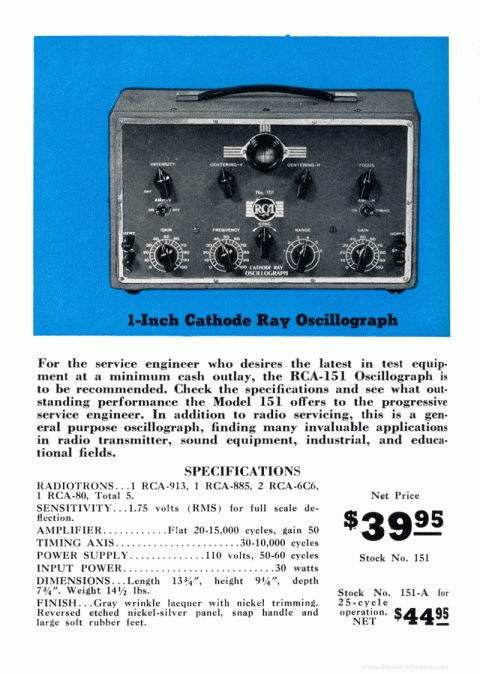
My device cost $44.95 - that’s $1015 today!
Maybe not so cheap for a well-off hobbyist, but certainly invaluable to the radio shop…
